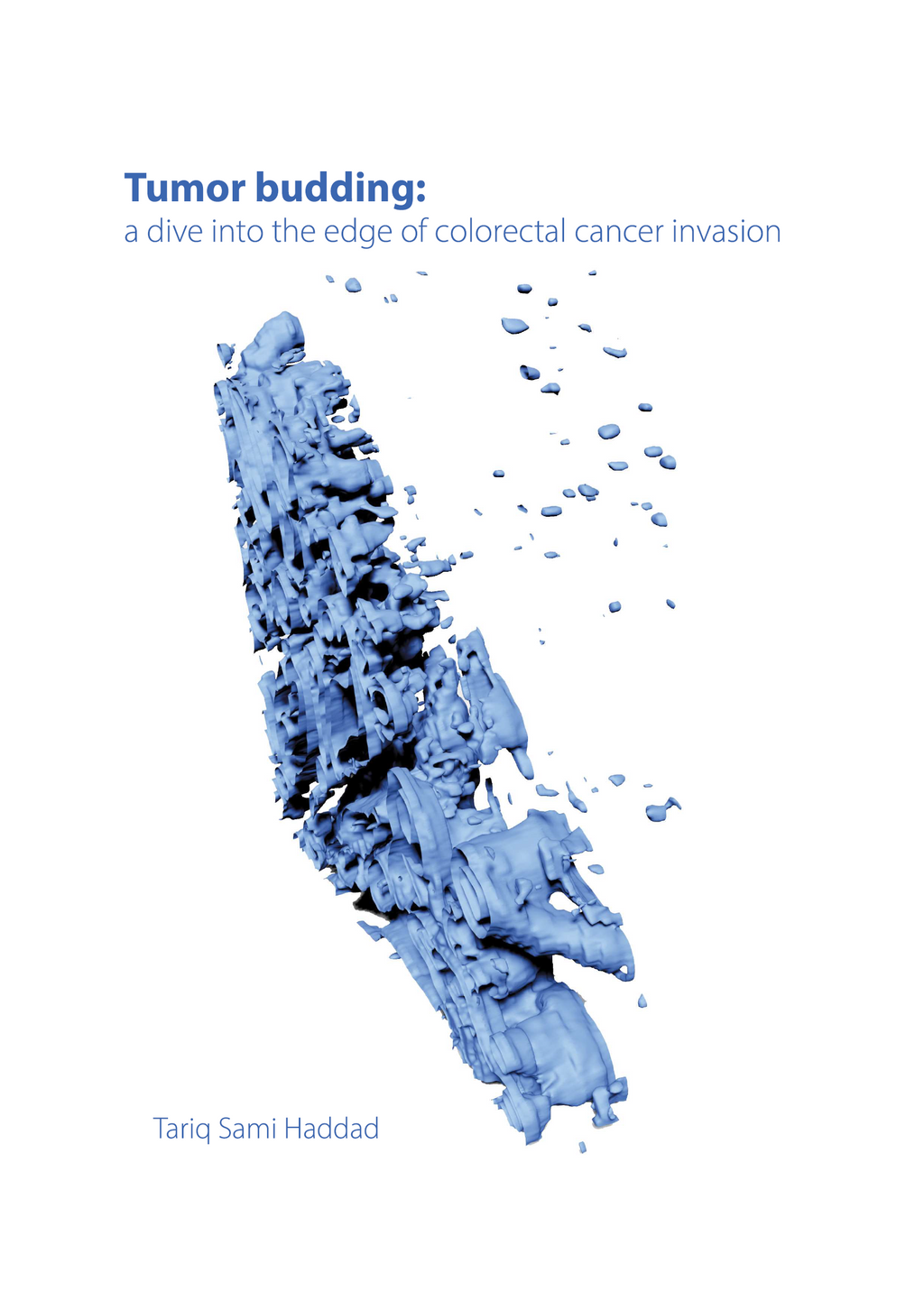Tumor budding: a dive into the edge of colorectal cancer invasion
T. Haddad
- Promotor: I. Nagtegaal, J. van der Laak and A. Lugli
- Copromotor: F. Doubrava-Simmer
- Graduation year: 2024
- Radboud University, Nijmegen
Abstract
Colorectal cancer is one of the most common cancers in the world, with more than 1.9 million new cases per year. Small tumor clusters of 1 to 4 cells at the leading edge of colorectal cancer (tumor budding) are crucial for its diagnosis and treatment. Through this research, we were able to visualize the entire leading edge of a colorectal carcinoma specimen as well as visualize tumor budding in 3D. We showed that tumor budding extends out from the main tumor going from larger to smaller tumor clusters and is biologically very different from another marker called pseudobudding. Our findings were clinically relevant because we recommend that pathologists avoid areas of inflammation when scoring tumor budding which can highly influence patient treatment. We were also able to identify high-risk early stage colorectal cancer patients through the digital scoring of tumor budding using AI in combination with Immunoscore.
